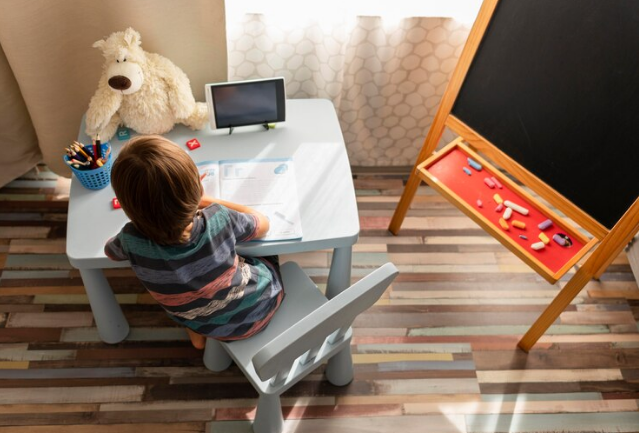Introduction
A crucial component of good parenting is child proofing the house, which is vital for averting mishaps and ensuring kids’ safety. This crucial procedure entails a thorough evaluation of the home environment in order to detect and eliminate any risks that can endanger inquisitive, youthful explorers. Children’s skills and interests change as they mature, calling for a flexible approach to safety.
Because of their endless energy and curiosity, toddlers, for example, often require parents to lock up furniture, cover outlets, and limit access to potentially harmful locations like bathrooms and kitchens. As kids become older, the emphasis of childproofing changes to incorporate more advanced techniques including teaching them about personal safety and establishing limits for outdoor play.
This article delves into the diverse aspects of child proofing, offering perspectives on numerous approaches customized for distinct phases of growth and development. It emphasizes how crucial it is to constantly modify these safety precautions in light of the possibility that an active preschooler may require something different from what is safe for a crawling infant.
Parents can establish a home setting that meets their children’s developmental needs and guarantees their physical safety while also promoting an atmosphere of curiosity and learning within safe boundaries by adopting a proactive and flexible approach to child proofing.
Overview of Current Childproofing Ideas
Over time, childproofing has changed dramatically, moving from simple physical barriers to cutting-edge technology and creative approaches. This change is a result of shifting home environments as well as our expanding knowledge of the needs for safety and child development.
Knowing Child Psychology for Safety
The way a youngster interacts with their surroundings is directly influenced by their cognitive development. Recognizing risks motivated by curiosity necessitates a thorough comprehension of child psychology. Since children are inherently curious, childproofing should take that into consideration.
Individual Room Safety Evaluation
Every room in the house has different risks. For example, living rooms need furniture that is secured to prevent tipping, while kitchens need protection against burns and cuts. The customization of safety protocols for shared and multipurpose spaces is covered in this section.
Child proofing Various Ages and Skill Levels
There is no one-size-fits-all strategy for child proofing. Taking into account the child’s age and ability, it must change as they grow. For example, children with specific needs may need additional or different kinds of safeguards, and toddlers require different safety precautions than newborns.
The Significance of Appliance and Furniture Safety
When it comes to childproofing, furniture and appliance placement are important considerations. Selecting kid-friendly solutions and tactics to avoid mishaps with bulky or mobile items is covered in this section.
Cleaning supplies and pharmaceuticals are only two examples of the many compounds found in toxic substances and child proofing households. To avoid unintentional exposure or toxicity, these compounds must be properly identified, handled, and stored.
Disaster Planning for Childproofing
One part of childproofing that is sometimes forgotten is preparing kids for emergencies. This involves making sure kids have access to emergency contacts and are trained on emergency procedures.
Childproofing for Travel and the Outdoors
Beyond the house, childproofing should be practiced. The safety of kids in outdoor environments and during traveling—including stays at hotels or relatives’ houses—is covered in this section.
Juggling Overprotection and Self-Reliance
Achieving a balance between safeguarding children and impeding their autonomy is crucial. This section looks at creating a secure atmosphere that promotes independence and safe exploration.
The Social and Community Facets of Child proofing
Safeguarding children is not just the parental duty. It encompasses the larger neighborhood, which includes neighbors, daycare facilities, and schools. This section addresses the community’s involvement in ensuring the safety of children as well as the value of shared information and accountability.
Childproofing: Legal and Ethical Considerations
Legal and ethical issues, such as following safety guidelines and honoring a child’s need for exploration and development, are also involved in child proofing. By exploring these facets, this section offers a more comprehensive look into childproofing.
Comprehending the Development of Children
For childproofing to be effective, it is essential to comprehend the developmental phases of children. Every developmental stage—from crawling babies to inquisitive toddlers and active preschoolers—presents different difficulties. For example, infants need to be protected from sharp objects and choking risks, while toddlers need to be prevented from climbing and reaching hazardous objects.
Recognizing Typical Dangers in the House
Common home dangers differ by room. There are many hazards in the kitchen, such as hot surfaces and sharp objects. Slippery surfaces and drowning are common in bathrooms. Heavy furniture that can topple over is a worry in living areas and bedrooms, while outside places offer hazards like swimming pools and garden tools.
Useful Strategies for Childproofing
It takes more than just installing safety gadgets to effectively childproof a home. It entails keeping harmful goods securely out of reach, locking and guarding cupboards and doors, and keeping a close eye on young children in particular.
Exploration and Safety in Balance
It’s crucial to protect the house, but it’s also critical to give kids the opportunity to explore and learn. Development can benefit from controlled risks, such as allowing a youngster to climb under supervision.
The Use of Technology to Childproof
Technological developments provide fresh approaches to childproofing the house. Monitoring systems can assist in keeping an eye on kids in different rooms, and smart home gadgets can notify parents when cupboards or doors are opened.
Including the Youngster in Safety
It’s important to include kids in safety procedures as they get older. Encouraging responsibility and helping kids comprehend the value of safety are two benefits of educating them about risks and safe conduct.
Reevaluating childproofing measures on a regular basis
Children’s needs and abilities change as they get older, thus child proofing techniques must be regularly reviewed. For a toddler, what was safe for a crawling baby might not be.
Managing Childproofing in Multi-Level Residences
Problems and Fixes for Balconies and Stairs: addressing the particular hazards that multi-level residences’ balconies and stairs present.
Putting Safety Gates in Place Effectively: recommendations for safety gate installation and selection in high-risk regions.
Including Childproofing in Stylish and Secure Home Decor Home design decisions: striking a balance between flair and safety.
Creative Child proofing Items that Go Well with Interior Design: looking at products that provide safety without sacrificing the visual appeal of the house.
Keeping Pets and Siblings Safe from Harm
Creating a Secure Environment for Kids and Pets: Methods to guarantee that living together is secure and advantageous for kids and pets alike.
A Lookout for Houses Housing Various Age Groups: modifying childproofing techniques for households with both older and younger children.
Childproofing Beyond the Basics: Advanced
High-Tech Safety Devices and Solutions: Examining the newest innovations in child proofing, like alarms and locks that can be controlled via an app.
Getting Ready for Unusual Dangers: addressing less visible risks such as button batteries, tiny magnets, and window wires.
Childproofing via Participation and Education
Encouraging children to take part in childproofing projects and teach them about safety are two ways to empower them with knowledge and skills.
Using instructional activities to reinforce safety teachings is known as role-playing and safety drills.
Reexamining Childproofing Techniques
Yearly Safety Audits and Updates: It’s critical to periodically review and update childproofing strategies.
Adapting to Changing Family Needs and Dynamics: As children become older and family situations change, childproofing techniques should be modified accordingly.
Childproofing under Particular Circumstances
Adapting child proofing techniques for non-traditional living spaces, such as compact homes, recreational vehicles, or multigenerational households, to ensure safety.
Keeping children safe during periods of increased household activity and decoration is known as “childproofing” during holidays and special events.
The Emotional Repercussions of Childproofing
Fostering a Sense of Security vs. Fear: Striking a balance between the need to provide a safe environment and the need to prevent youngsters from developing excessive fear or anxiety.
Childproofing and Childhood Development: Analyzing how childproofing affects a child’s freedom of choice and curiosity.
Conclusion: A cooperative and flexible method
Child proofing is a collaborative process that emphasizes the roles of parents, caregivers, and the community.
The Continual Process of Building a Secure House: Final reflections on the developing concept of childproofing as an essential component of parenting.
To sum up, childproofing is an active, dynamic procedure that adjusts to a child’s changing surroundings and developmental stages. Ensuring that children grow up in a secure, supportive environment that simultaneously honors their need for independence and exploration requires constant learning, attentiveness, and change.
The ideal approach to child proofing is dynamic, according to the child’s developmental phases. It includes a mix of real-world safety precautions, electronic tools, and parent and kid education. Keeping this equilibrium guarantees a secure setting that supports constructive inquiry and education.
We hope you found this information helpful in your journey to create a safer environment for your family. At GuardWell Safety, we understand that every home is unique, and so are your child-proofing needs. That’s why we offer a Free Child-Proofing Consultation tailored to your specific requirements. Let our experts help you identify potential hazards and provide personalized solutions to make your home a secure haven for your little ones. Book your free consultation today and take the first step towards peace of mind.






